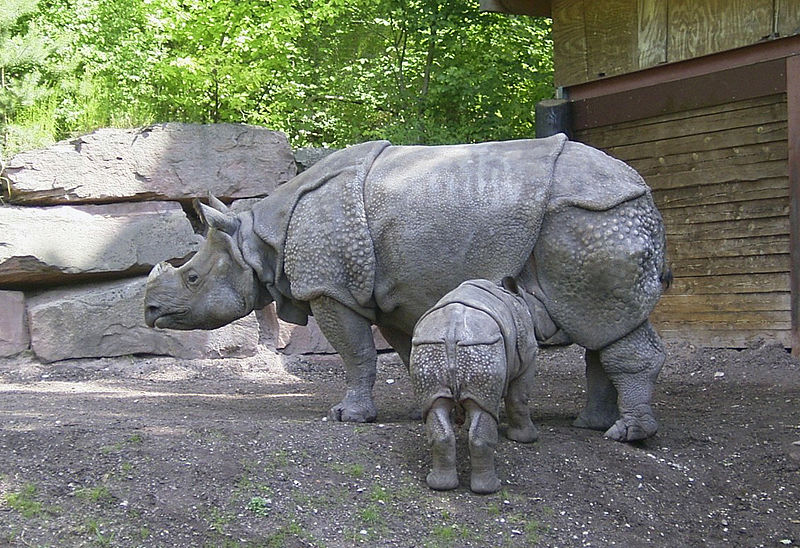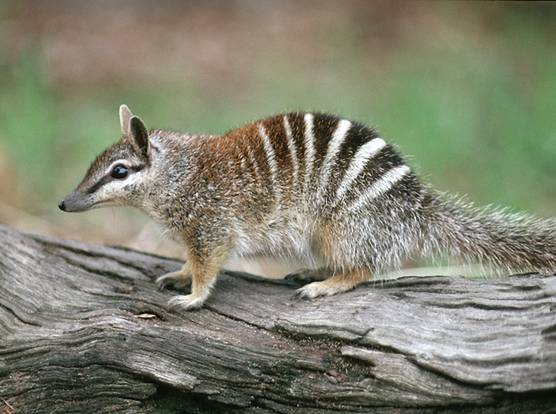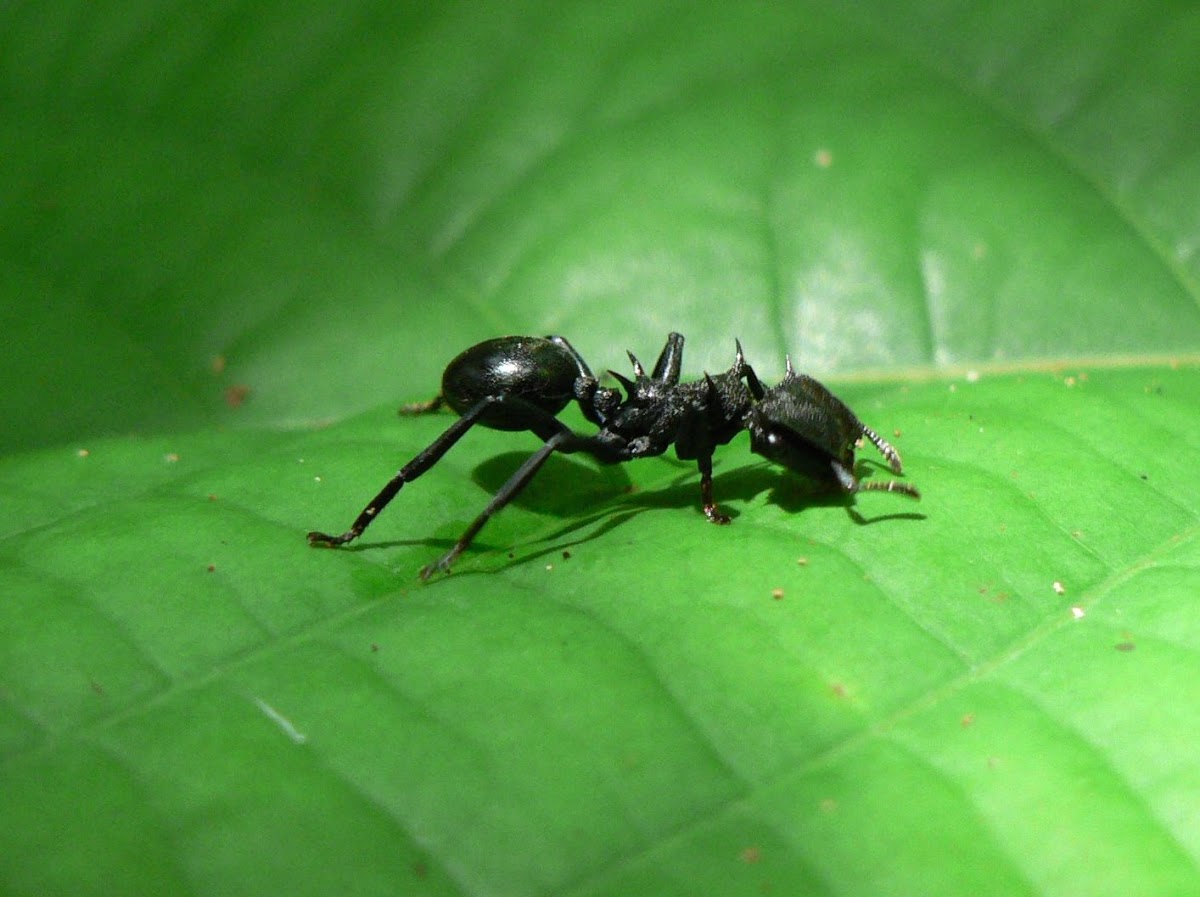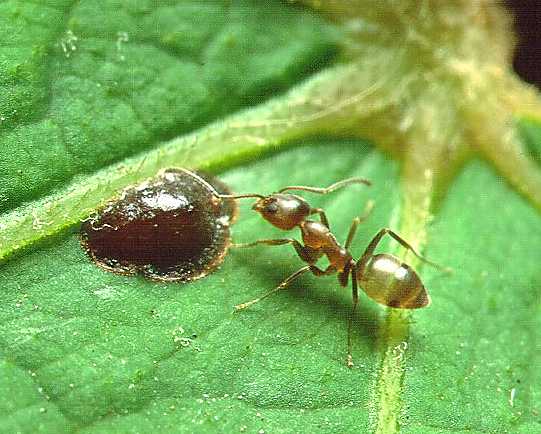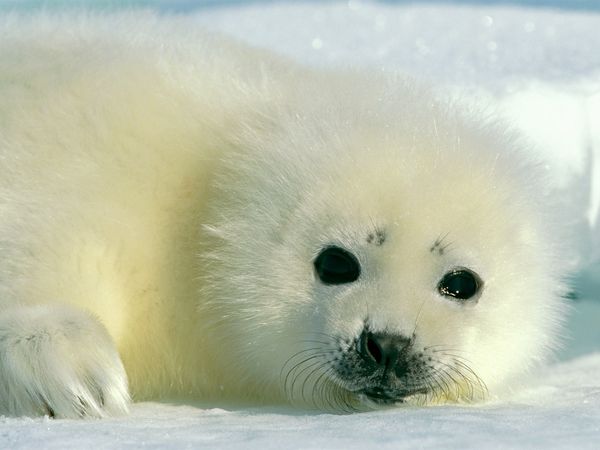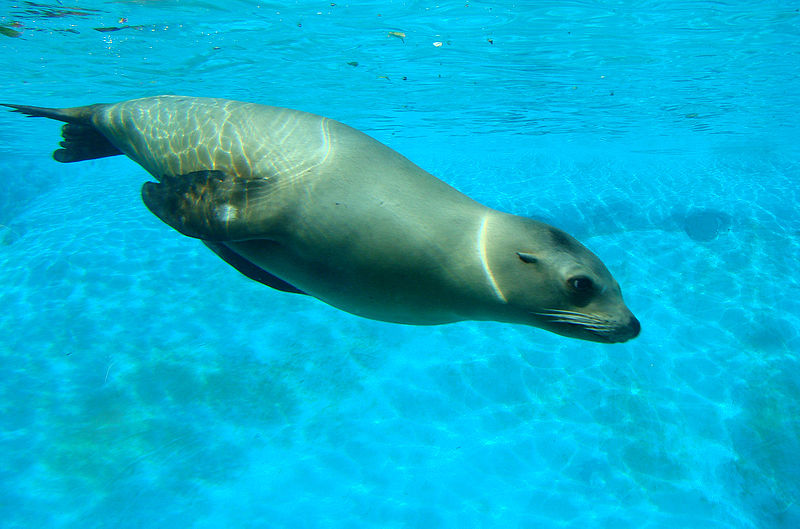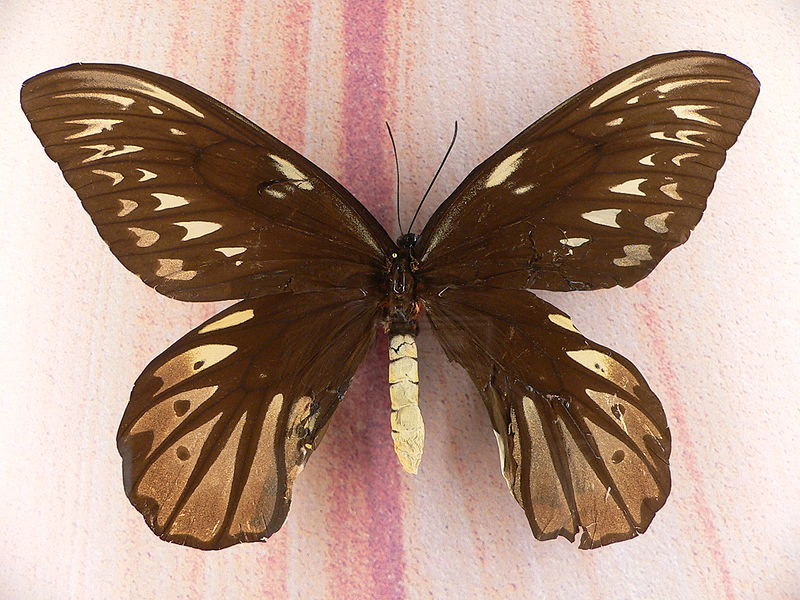
Happy Friday Everyone! Okay, so maybe it is a fake Friday for all of us that work a standard 9-5 job but that doesn’t change the fact that the weekend is almost here. To celebrate Fake Friday, we are going to look at an insect! Yay! Don’t worry, it is a pretty insect that is actually pretty cool. Today we are going to look at the largest butterfly on our planet. This distinguished honour goes to the Queen Alexandra’s Birdwing. Obviously, this butterfly was named after Queen Alexandra who was the wife of Edward VII. How about that – a history and biology lesson all rolled into one.
So how big is the largest butterfly in the world? Good question and since I anticipated that you would ask this, I have an answer for you. Queen Alexandra’s Birdwing can have a body length up to 8 cm (3.2″) and a wingspan up to 31 cm (14″). Yes, their wingspan can be over a foot long which is why they are considered the largest butterfly in the world. That is pretty much the size of a small bird! So is there anything else you would like to know about this interesting insect?
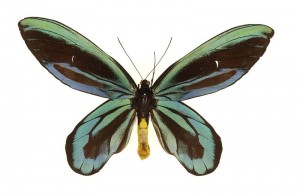
How about where we can find them? Wow, another great question. Well my friend, they can only be found in the rainforests of a small section of Papua New Guinea (in case you are familiar with New Guinea, they can be found in the forest of the Oro Province). Since they are basically restricted to about 100 square kilometers of coastal habitat, these insects are considered to be endangered. Even though they are endangered they are quite abundant throughout these forests so we should have a good chance seeing them the next time we visit. Unfortunately, these poor butterflies may be left homeless as their homes are being destroyed to make room for more Palm Oil Plantations. It would be terrible if we lost such a beautiful butterfly.
Queen Alexandra’s Birdwing Fast Fact – This butterfly employs a similar tactic as the Monarch Butterfly. What is it you ask? Well they will lay their eggs on a toxic pipevine plant. The caterpillars will of course feed on the plant and voila – we have a toxic butterfly. Predators everywhere should be warned that these are not tasty creatures.
Thanks for stopping by Wild Facts. Now get outside and enjoy some real wildlife! See you tomorrow.

